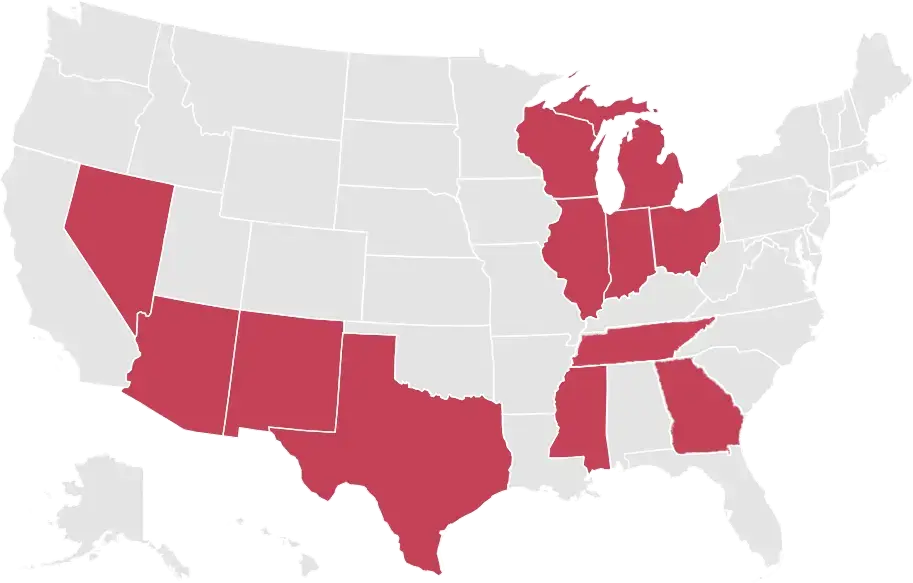Stated simply, auto insurance is a contract between the policyholder and the insurance company. The policyholder agrees to pay premiums on the policy, and the insurer will pay for losses as defined in the policy.
In Illinois, vehicle auto insurance is required, as it is in 46 other states. Not having insurance coverage on your vehicle can put you in severe financial jeopardy, and there can also be serious legal penalties, including fines and suspension of your license plates.
Types of auto insurance coverage
A typical auto insurance policy usually includes the following components.
- Bodily injury liability – This coverage refers to bodily injuries that the policyholder and family members listed on the policy cause to someone else. These individuals are also covered when driving someone else’s car with permission.
- Property damage liability – This coverage pays for damages policyholders, or someone else driving their car with their permission, may cause to someone’s property. This usually means their car but might also include lamp posts, fences, buildings or other structures.
- Personal injury protection (PIP) – This coverage pays for the treatment of injuries to the driver and passengers in the policyholder’s car. PIP may also pay for lost wages and the cost of replacing services normally performed by someone injured in an auto accident.
- Collision – This pays for damage to the policyholder’s car resulting from a collision with another car or object or from flipping over, even if the policyholder is at fault. Collision coverage is usually sold with a deductible that typically varies from $250 up to $1,000. The policyholder is reimbursed for the costs of repairing their car, minus the deductible.
- Comprehensive – This coverage reimburses for losses from theft or for damages caused by such things as fires, explosions, falling objects, earthquakes, windstorms, floods, hail, vandalism and riots or damage from animals, such as deer and birds. It may also pay for cracked or shatter windshields. It’s usually sold with a $100 to $300 deductible.
States do not require collision and comprehensive coverage, but lenders may insist that borrowers carry it until they’ve paid off their car loan.
- Uninsured/Underinsured motorist coverage – This coverage reimburses a policyholder, family member or designated driver if they’re hit by either an uninsured or hit-and-run driver. It also comes into play when the at-fault driver has insufficient coverage for the policyholder’s total loss.
Illinois vehicle auto insurance requirements
Illinois law requires you to have vehicle liability insurance in the following minimum amounts:
- $25,000 for the injury or death of one person in an accident
- $50,000 for the injury or death of more than one person in an accident
- $20,000 for damage to the property of another person
Other coverage options
In addition to the minimum state requirements and other coverage already mentioned, you might consider these additional options.
- Accident forgiveness – Your rates are not raised after your first at-fault auto accident.
- Roadside assistance – This coverage provides for fuel delivery, lockout assistance, jump starts and more.
- Loss of use coverage – This covers car rental or other travel expenses while your vehicle is being repaired.
Deductible versus premium
The deductible on your policy is inversely proportional to the premium amount. When the deductible goes up, the premium declines and vice versa. Some prefer paying a higher premium in exchange for a lower deductible to avoid large out-of-pocket payments after an accident.
How much coverage is enough?
Determining the right amount of coverage can be tricky, and if you’re underinsured, you may be obligated to pay for damages beyond your coverage level. If possible, try to be covered for an amount equal to the total value of your assets.
Auto Insurance Score
Companies use your auto insurance score to determine if you’re a low-risk driver entitled to lower coverage premiums. Your score is closely related to your credit history, and scores range from 300 up to the high 900s. A good score can start in the 700-800 range.
When should you drop full coverage on your car?
To answer this question, consider the 10% rule of thumb. If your annual cost for full coverage is more than 10% if the replacement value you’ll receive from your insurer, you may want to drop full coverage.
For example, if you have an older car whose replacement value is only $3,000 after the deductible and premiums for full coverage are more than $300 a year, you may want to drop full coverage and go with liability only. The money saved on premiums can go into an emergency fund to pay for future damages and repairs.
Contact Us
We hope you find this Illinois vehicle auto insurance primer helpful, and when shopping for vehicle insurance, we hope you’ll contact Accurate Insurance, the company where it’s always love at first quote!




